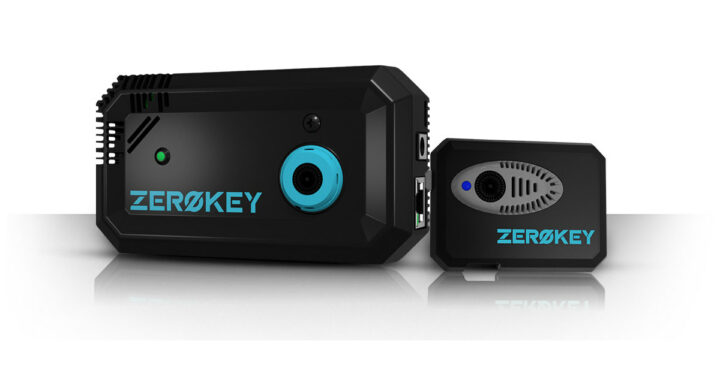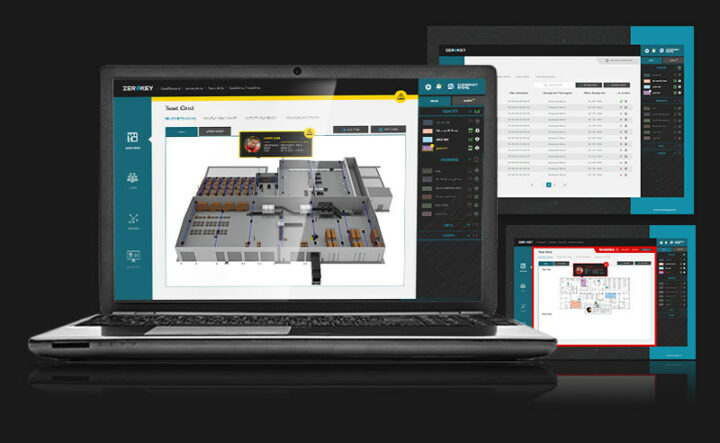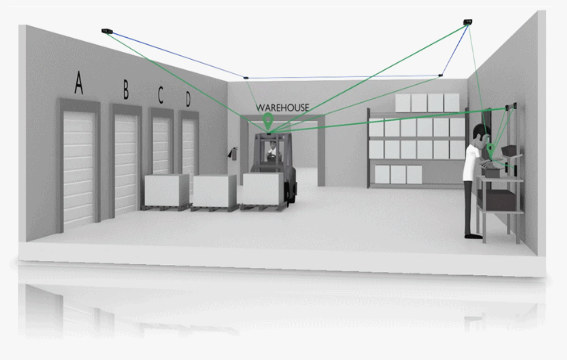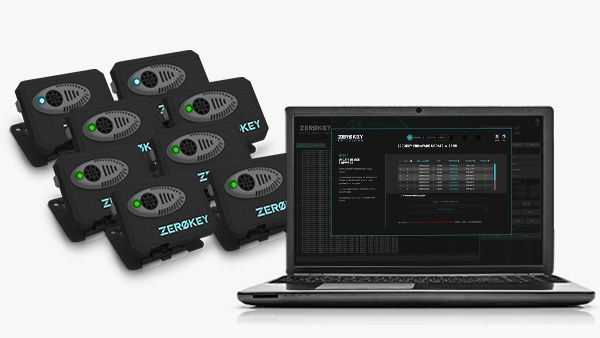ZeroKey’s Quantum RTLS is a 3D real-time location system (RTLS) for millimeter-level accuracy designed for the real-time monitoring of assets and people to optimize workflows in the manufacturing, supply chain, and logistics industries.
The company claims that with time and location data, the solution provides the “highest level of accuracy and actionable analytics through its Spatial Intelligence Platform, giving customers 4D operational intelligence that truly delivers on the promise of Industry 4.0”, and the “hyper accuracy of Quantum RTLS empowers companies to solve problems that have never been solved before in industrial environments”.

Quantum RTLS works with PoE anchors placed in fixed locations and trackable devices attached to mobile assets. That looks very much like FiRa UWB to me, except with higher accuracy, but at no point, ZeroKey talk about Ultra Wide Band on their website, and instead the technology is based on ultrasonics, and communication between the gateway and nodes relies on 2.4 GHz ISM.
The key features and main benefits of Quantum RTLS technology include:
- Millimeter-level accuracy
- Real-time 3D tracking
- Operational visibility from a globally accessible platform
- Analytics and digitization of physical processes
- Wide-area multi-floor/multi-room/multi-building scalability
- Rapid deployments with patented self-calibration technology
- Open API for easy integration of third-party platforms
If the illustration above matches requirements in real-life settings, you may need four anchors to track devices, and spacing will determine the level of accuracy. For example, the operator’s watch on the right can be tracked with millimeter-level accuracy thanks to four anchors attached to his workstation, while the forklift is tracked with four anchors on the roof, and I suspect with centimeter-level accuracy.

The cloud-based software “Spatial Intelligence Platform” allows customers to monitor the devices in list form, on a floor map, and even in 3D renderings of the working area(s) in real-time. It’s also possible to create virtual zones to prevent collisions, reduce bottlenecks, monitor danger zones, and so on.
Quantum RTLS will be available on June 30, 2022, and the company will provide a Pilot Kit / Starter Kit) for evaluation with 6x QTM-UAR10 universal anchor nodes, 2x QTM-UMR10 universal mobile nodes, and one QTM-AGP10 gateway with accessories (e.g. power supply), good for coverage of an area of up to 400 m2, and including access to the RTLS Management Software and developer access to the Spatial Intelligence Platform. More details may be found on the company’s website.
Thanks to TLS for the tip.

Jean-Luc started CNX Software in 2010 as a part-time endeavor, before quitting his job as a software engineering manager, and starting to write daily news, and reviews full time later in 2011.
Support CNX Software! Donate via cryptocurrencies, become a Patron on Patreon, or purchase goods on Amazon or Aliexpress






